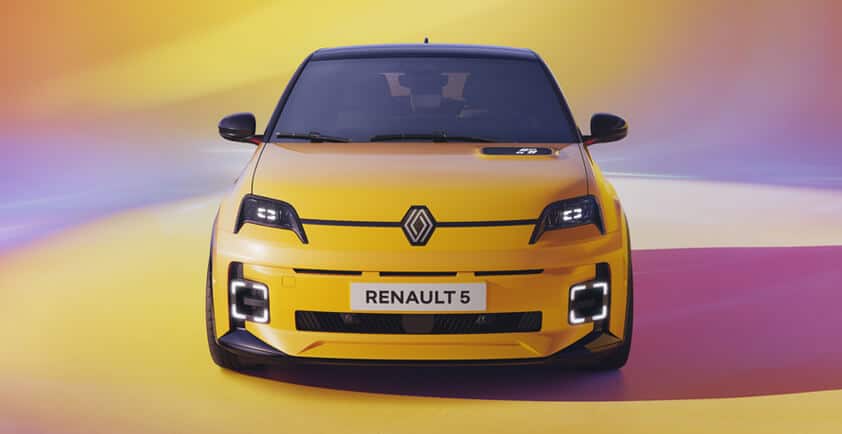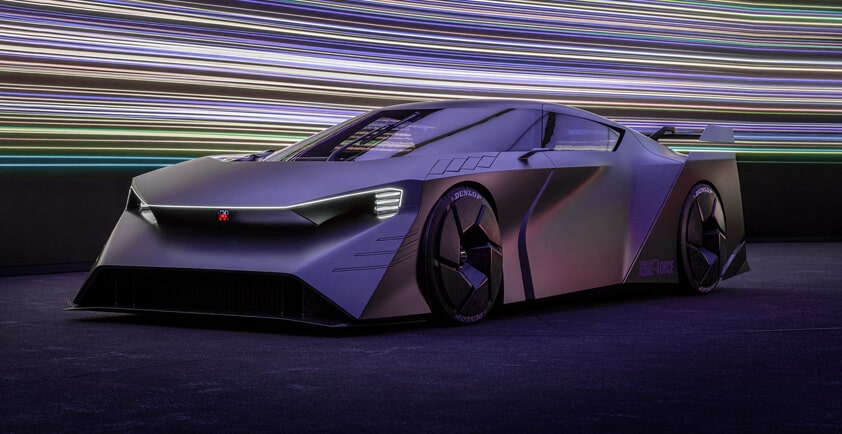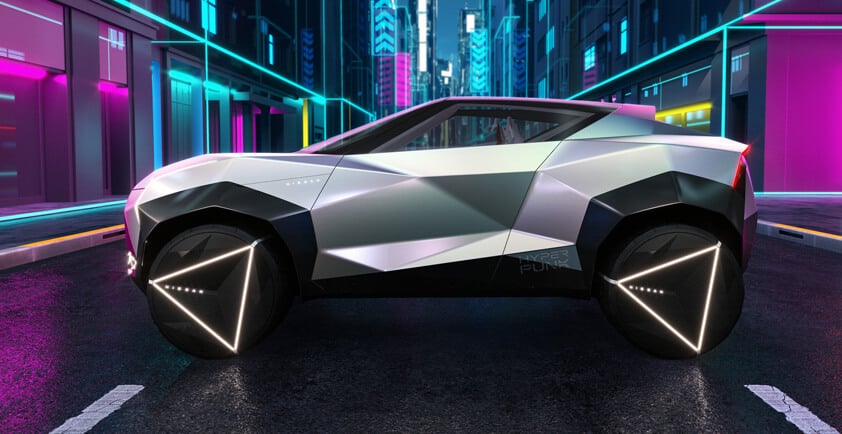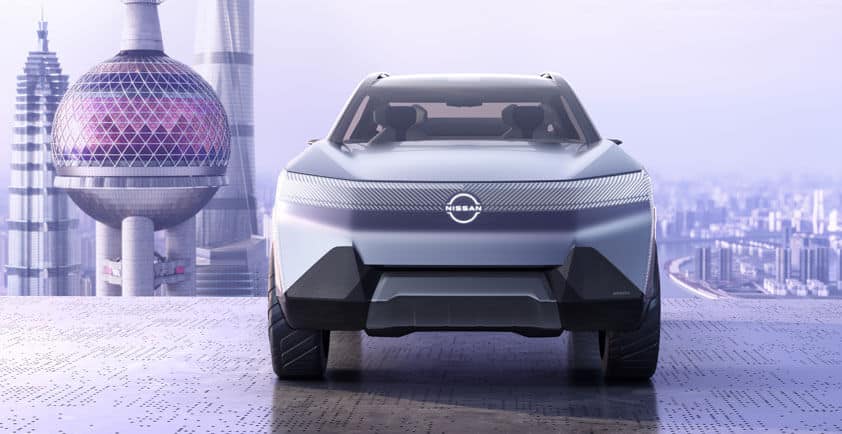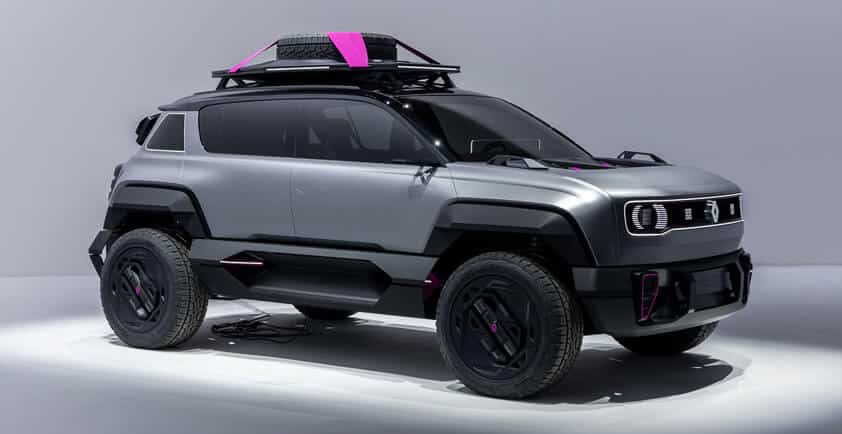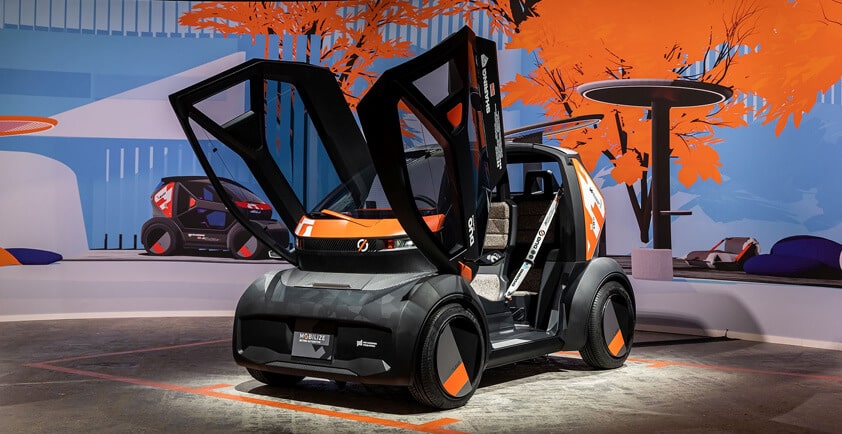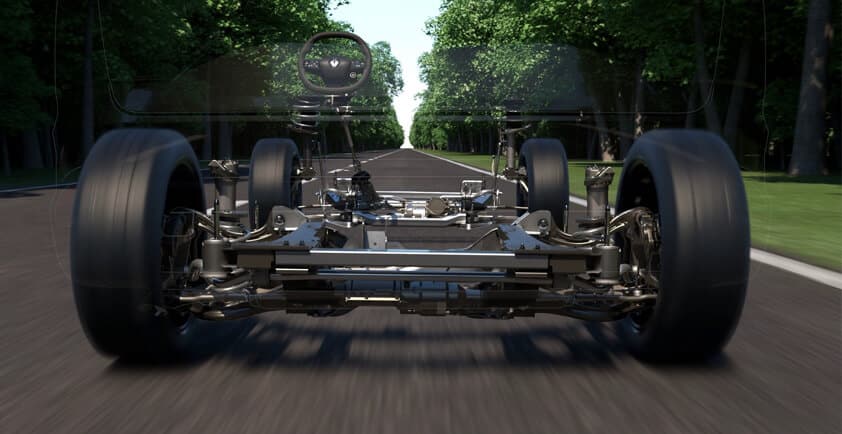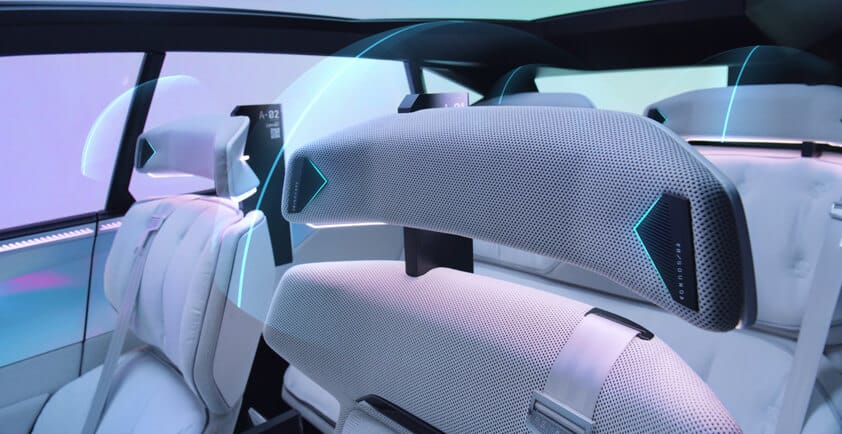
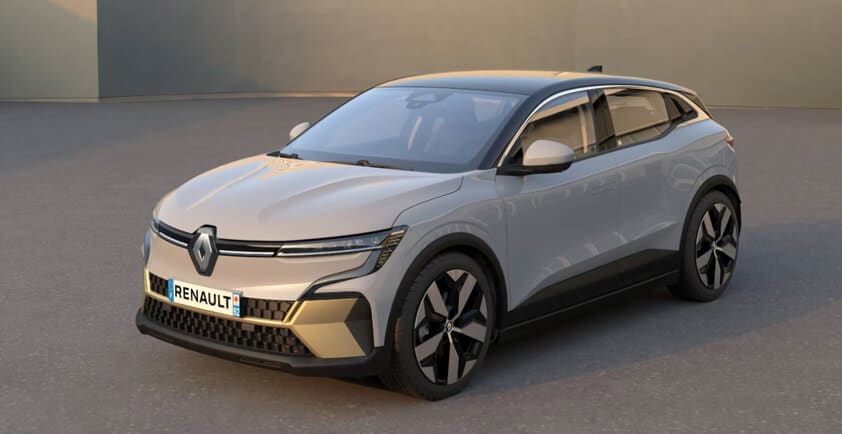
RENAULT - VEHICLE DIGITAL TWIN: WHEN PHYSICAL AND DIGITAL MODELS UNITE
How are future vehicles designed? Renault Group manages this by leveraging its long-standing expertise and skill set. It also harnesses the latest advancements in computer technology, digitization, digital simulation, artificial intelligence, computer learning, data management, and cloud technology. Vehicles are now built by using a digital twin. Let us tell you all about it!
Digitalization at Renault Group is nothing new, but it has been taking on greater importance as the company evolves into a Tech Company. A critical direction to take in order to cope with the growing technological complexity of vehicles, the increasing number of technical and regulatory requirements, and the constant improvement of current and upcoming vehicles that now operate in a connected world. In recent years, the tools used by Design and Engineering have been so advanced that virtual reality now out paces physical reality. Digital twins exist before the real-world vehicle itself. Let’s find out why.
What is a ‘digital twin’?
According to the dictionary, a digital twin is: ‘the digital replica of an object, process, or system’. In automotives, the first digital twins were created by digitizing or copying real vehicles. Piece by piece, right down to the tiniest bolt. Hence the term ‘twin’. With technological advancements, digital twins are now created before their physical other. Their name is misleading because, in fact, the digital twin is a compilation of all the digital and physical models of the physical object that does not yet exist. A physical copy that will be born once the models reach a certain level of maturity.
Digital twins are now a fundamental piece of the puzzle that is the automotive industry. It revolutionised the way people in vehicle design, manufacturing, and repairs actually worked. Design, Engineering, Manufacturing, Customer Service: they all have better output, can ‘interact’ with each other over the cloud in real time, and share a comprehensive and up-to-date database throughout the vehicle’s entire lifespan. It really does change everything!
From the birth of the digital twin
When creating a vehicle, Design is responsible for creating the shape and appearance (a vehicle's skin, colours, materials) by striking a balance between aesthetics, function, and physical constraints. They are the first to design a ‘part’ of the digital twin by building virtual models of the future vehicle’s exterior and interior. The objective of these multiple ‘test’ models is to achieve the best possible presentation and finish.
The digital rendering tools give such a clear, realistic representation that designers can determine the look and perceived quality of the bodywork or interior based solely on the virtual copy. They can handle the textures of each part, their position, and even the reflections seen on glossy and glass surfaces in the car. It's like the real thing!
Design then sends Engineering a digital file of their proposals for the interior and exterior via the cloud.
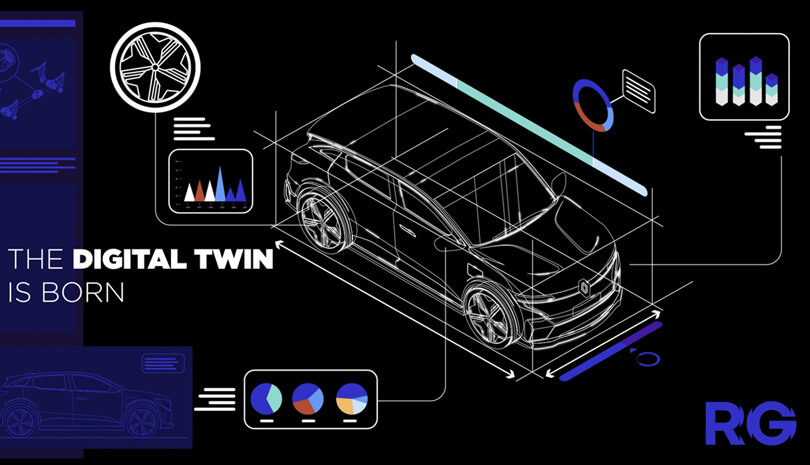
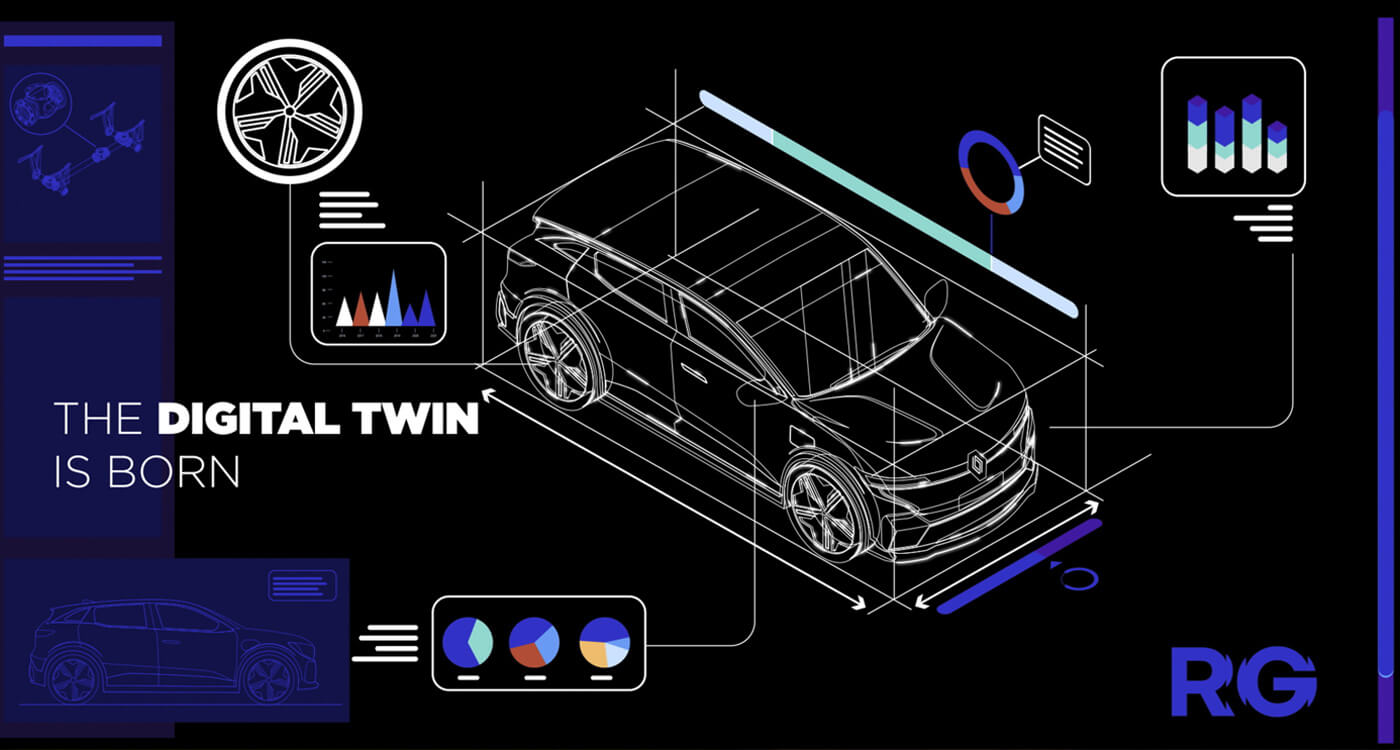
To the birth of the physical twin
Engineering takes over from Design and designs the car from a technical side. Based on the cloud-stored digital mock-ups, it creates a complete 3D vehicle, piece by piece, all virtually. Bodywork, chassis, circuitry and electronics, engine… almost nothing is left out!
With their three-dimensional digital simulation tools, engineers can even place a virtual occupant inside the future vehicle early on in the process, just as they would in a physical car. These tests help assess certain constraints, such as positioning (ergonomics) and HMI (human-machine interface).
Engineering is there to ensure that everything is fully compliant, from the individual parts through to the on-board systems (ADAS, sensors, ...). Using the digital twin, Engineering can create and test every component and equipment on the car as much as necessary with no physical limitations in order to verify their system and inter-system operations. Nothing is left to chance: whether it can it be made and assembled, is it compatible, sustainable, resistant, etc.
During this phase, engineers use a 3D copy of the entire digital twin for an immersive simulation to test, for example, bodywork aerodynamics, engine performance, gear management, or even air conditioning efficiency. Everything is put through its paces!
Digital models are also put through virtual crash tests, virtual road driving scenarios, ‘digital’ wind tunnel testing, and more. Each simulation is carried out much faster and in far greater quantities than physical tests could ever be. With complete digitalization of the design and creation of a vehicle, virtual tests can be carried out up to two years before actual tests. It is easy see what progress digital-twin technology represents.
During the testing phase, each successful technical feature is consolidated into an ‘optimal’ digital model. When completed, this model becomes the digital twin then used to design the first physical mock-up. A fine example of putting theory into practice!
Twins at last!
With the virtual tests completed, it is time to move on to the real thing with real prototypes. Despite digitalisation, they remain essential parts of the puzzle as they provide the only true demonstrable proof of the final product, what the client will ultimately receive. Extremely costly to produce, these prototypes are each hand-made, one by one, all to be thrown about and put through tougher paces! They undergo a multitude of tests, particularly dynamic testing, on test tracks at the Renault Technical Centre in Aubevoye. This test phase is now the final step where everything is given the final approval before factory production is given the green light.
Both twins now exist: the digital and the physical. They will follow each other for the rest of their lives.
What next?
Now enhanced by the extensive real-world tests carried out on the prototypes, the final digital twin will be used by Manufacturing to produce the future production vehicle. Suppliers will use the virtual clone for each part in order to produce the physical copy. The factory will use the entire digital twin to create a virtual design of the future assembly line, to configure the machine tools, and to measure workflows (operator movements, component logistics...). The digital twin is a mine of information for everyone to use!
The twins follow each other for their entire existence but lead separate lives. Before the vehicle is built, the digital twin ‘feeds’ the physical one. Once the vehicle leaves the factory doors, that all changes. Commercial teams (logistics, sales, and customer service) provide the digital twin with input such as customer feedback, quality monitoring, and updates based on how the cars a really used in their lives as production models.
With virtual modelling, the total time required to design a new vehicle has been reduced by a quarter. That's one less year. That is extraordinary progress given the growing technological complexity of vehicles!
While empirical learning is not set to disappear (for now), the future of artificial intelligence will exponentially expand the scope and performance of digital learning. The digital twin is ground-breaking, fundamental technology for Renault Group. Be it for the design and production of vehicles, but not only. It means Renault Group vehicles are continuously being improved. Providing added safety, comfort and enjoyment for their owners. All thanks to who?
Author Nicolas Le-Boucher
